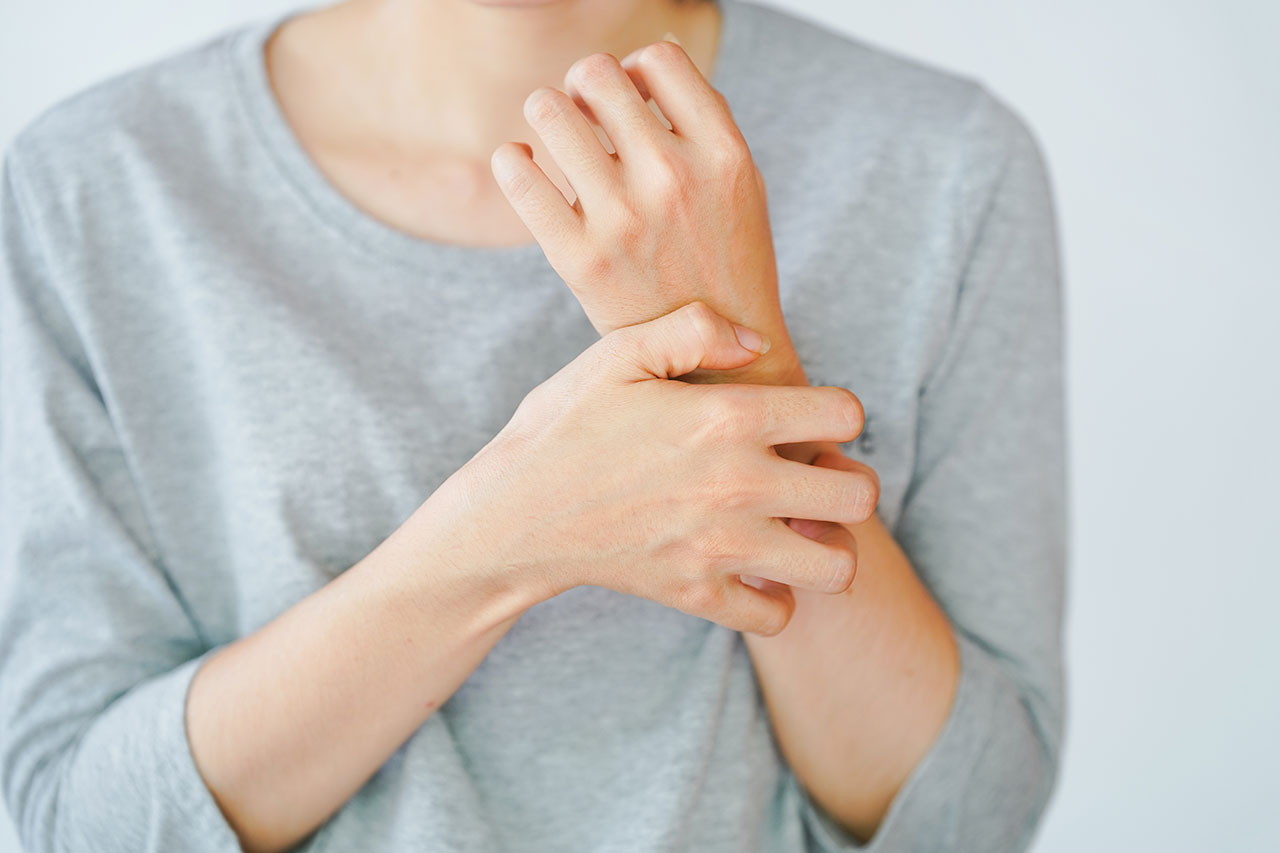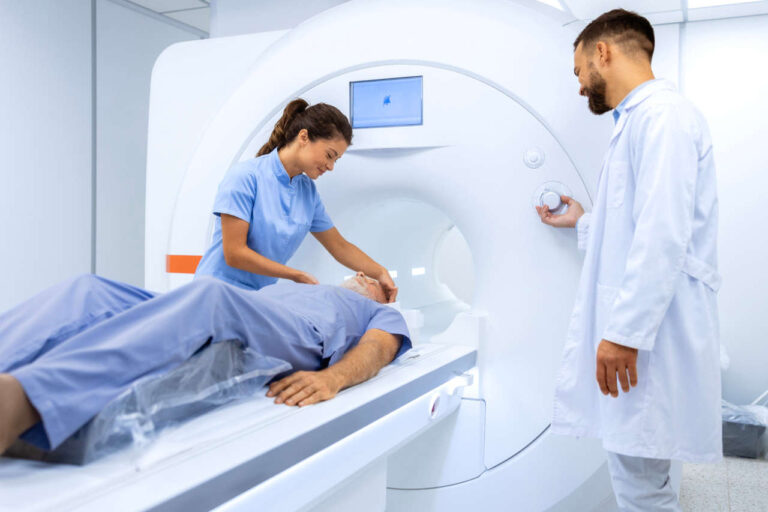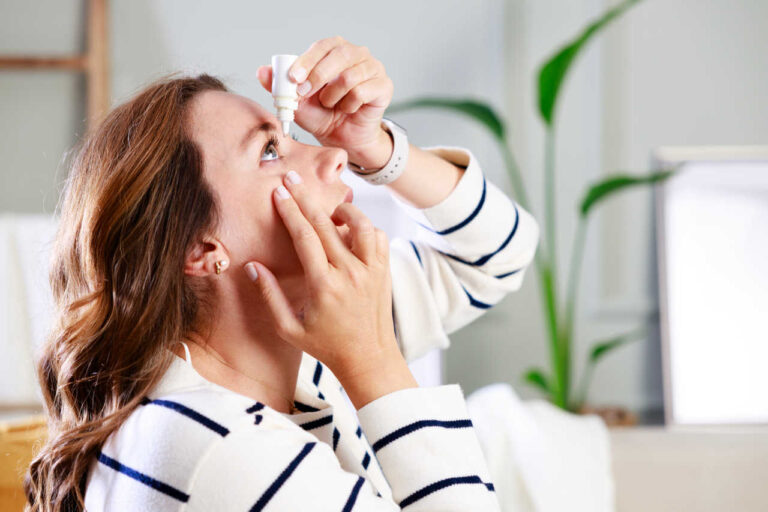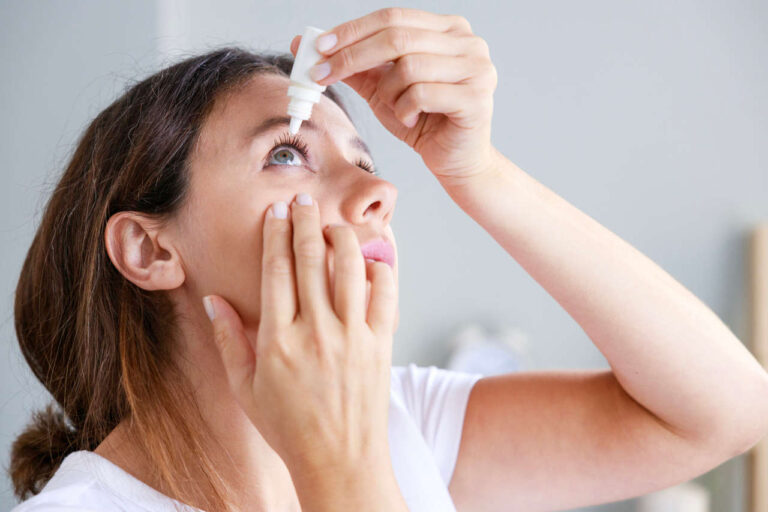
Amyopathic dermatomyositis (ADM) can also be commonly referred to as dermatomyositis sine myositis. ADM is a rare cutaneous (skin-related) form of dermatomyositis that involves a typical skin finding without muscle damage or weakness, usually present for at least 6 months. Hypomyopathic dermatomyositis (HDM) are the subcategories of dermatomyositis that are collectively described as clinically amyopathic dermatomyositis (CADM).
Get IVIG Copay Assistance
Speak to a SpecialistHypomyopathic dermatomyositis accounts for less than 5% of all diagnoses of dermatomyositis. It can be indicated with minor muscle abnormalities or damage. More importantly, HDM is associated with interstitial lung disease (ILD) and may carry a more unfavorable prognosis than amyopathic dermatomyositis with ILD. In severe cases, interstitial lung disease may cause fatal complications in CADM patients.
Amyopathic means lack of muscle weakness or no muscle damage. The term dermatomyositis is defined as a rare inflammatory disease that displays muscle weakness and a hallmark symptom of skin rash.
As previously mentioned, ADM is a rare condition, and it affects fewer than 200,000 people per year. ADM generally affects women more than men, most commonly seen in young Caucasian and Asian females. The typical age range for ADM is between 40 – 60 years old.
Amyopathic Dermatomyositis Signs and Symptoms
Amyopathic dermatomyositis symptoms may vary from patient to patient. The symptoms are often different amongst each patient; some may not have the skin and muscle symptoms, while others may experience some of the symptoms listed below.
The symptoms patients can experience with amyopathic dermatomyositis include the following:
- Eyelid abnormality
- Skin rashes caused by inflamed or injured blood capillaries, primarily seen on sun-exposed areas such as your face, shoulders, elbows, and upper chest area
- Muscle aches
- Weight loss
- Low-grade fever
- Fatigue (usually affecting daily life activities or sleep patterns)
- Joint inflammation
- Gottron’s papules or Gottron’s sign, which are raised, scale-like bumps that are seen over the knuckle, elbow, and knee areas
- Difficulty swallowing
- Lung inflammation
- Swelling around eyes
Get IVIG Prior Authorization
Causes of Amyopathic Dermatomyositis
Amyopathic dermatomyositis has an unknown origin at this time. It is usually characterized as an autoimmune disease that involves many body organs, including the skin.
Amyopathic Dermatomyositis Diagnosis
For diagnosis, a patient will present with dermatomyositis skin findings for at least 6 months with no clinically evident muscle weakness. The following amyopathic dermatomyositis diagnostic criteria and tests may be used to help aid with the diagnostic process:
- Typical dermatomyositis skin symptoms are present (i.e., red skin patches over the knuckles and Gottron papules [red bumps on the skin or erythematous eruptions], periorbital swelling, purple rash, etc.).
- Skin biopsy demonstrates diminished or reduced density of blood capillaries and deposits of membrane attack complex on tiny blood vessels.
- Muscle biopsy may help to reveal muscle inflammation and other problems (i.e., muscle disease, damage, or infection).
- Myoglobin and creatine phosphokinase/creatine kinase levels are likely to be normal in cases of no muscle involvement.
- Pulmonary function tests are ordered to assess dermatomyositis-associated conditions, especially in those with lung inflammation.
- Electromyography (EMG) tests are ordered to evaluate nerve and muscle dysfunction or signal transmission from nerve to muscles. However, EMG findings are usually normal in clinically amyopathic dermatomyositis.
Amyopathic Dermatomyositis Treatment

Unfortunately, there is no definite treatment for amyopathic dermatomyositis at this time. However, symptoms are treated to relieve and manage the condition. Listed below are some of the treatment options available for patients to help with symptoms and improve their overall quality of life:
- Sun protection:
Wear photoprotective clothing, apply ample sunscreen, and avoid the sun as much as possible. - Corticosteroid topical therapy:
This therapy is applied over damaged skin to treat dermatomyositis symptoms. Corticosteroids should not be used for extended periods as they can cause severe side effects. Your health care provider may decrease the dose once the symptoms start improving. - Immunosuppressive agents:
Agents such as mycophenolate mofetil, azathioprine, and methotrexate may be beneficial to help manage dermatomyositis symptoms. Mycophenolate mofetil is mainly used for treatment if lung impairment is involved. - Rituximab:
Rituximab is commonly given as a last-line therapy if initial treatments fail to treat dermatomyositis manifestations. - Physical therapy:
Physical therapy may help to increase and maintain your strength and flexibility with routine exercise. This may help in restoring your health over time. - Surgery:
Surgery is an option to get rid of painful calcium deposits in the joints. Thus, surgery protects such patients from recurring skin infections and other diseases. - Intravenous immunoglobulins (IVIG) therapy:
Immunoglobulin is obtained from the blood plasma of many blood donors. It contains healthy antibodies that suppress or block the harmful dermatomyositis antibodies that cause skin and muscle damage. IVIG is an effective but costly treatment option. It may require repeated infusions on a regular basis to continue the positive effects of treatment.
Get Your IVIG Dose
At-Home InfusionLiving With Amyopathic Dermatomyositis
Living with ADM can significantly affect the daily lives of patients and their families. Many patients who have developed amyopathic dermatomyositis may need life-long treatments to manage their condition. Below are tips to help live a balanced life and several coping strategies:
- Educate yourself about the disease and work closely with your doctor to manage and control your illness.
- Keep your doctor or health care professional updated about new cutaneous signs and other related symptoms you may develop.
- Remain active and do regular exercises to maintain and boost your muscle strength. This will keep your mobility and joints unaffected by the impacts of long-term amyopathic dermatomyositis.
- Do not wait to be completely exhausted; if you feel tired, rest to restore yourself.
- Acknowledge your emotions (frustration, denial, anger, fear of isolation, etc.). Stay close to your loved ones for support, and manage your daily routine.
Complications of Amyopathic Dermatomyositis
ADM may present with severe complications in some patients, such as malignancies (cancers). Nasopharyngeal and ovarian cancers are the most common complications in amyopathic dermatomyositis and dermatomyositis disease. Therefore, cancer screenings are critical for these patients before, during, and after diagnosis.
Similar to the symptoms of ADM, other complications may include:
- Lung disease (interstitial lung disease, aspiration pneumonia, breathing problems, etc.)
- Heart disease (inflammation of the heart muscle)
- Weight loss
- Malnutrition
- Calcium deposits in the joints
These complications can be debilitating and can worsen the disease prognosis, making treatment options more difficult and complex in certain cases.
Can IVIG help?
Free IVIG Treatment InfoFAQs
What is Clinically Amyopathic Dermatomyositis (CADM)?
Clinically amyopathic dermatomyositis (CADM) is a rare disease with unknown origin. It is characterized by the specific cutaneous lesions of dermatomyositis without clinical features or laboratory findings of myopathy or muscle weakness. It comprises 20% of patients with dermatomyositis.
Is Amyopathic Dermatomyositis an autoimmune disease?
Amyopathic dermatomyositis has significant resemblances to autoimmune diseases. It involves the skin as well as other organs. A person having a compromised immune system due to cancer or any viral infection may be at risk for other diseases.
REFERENCES:
- https://rarediseases.org/gard-rare-disease/amyopathic-dermatomyositis/
- https://understandingmyositis.org/myositis/clinically-amyopathic-dermatomyositis/













